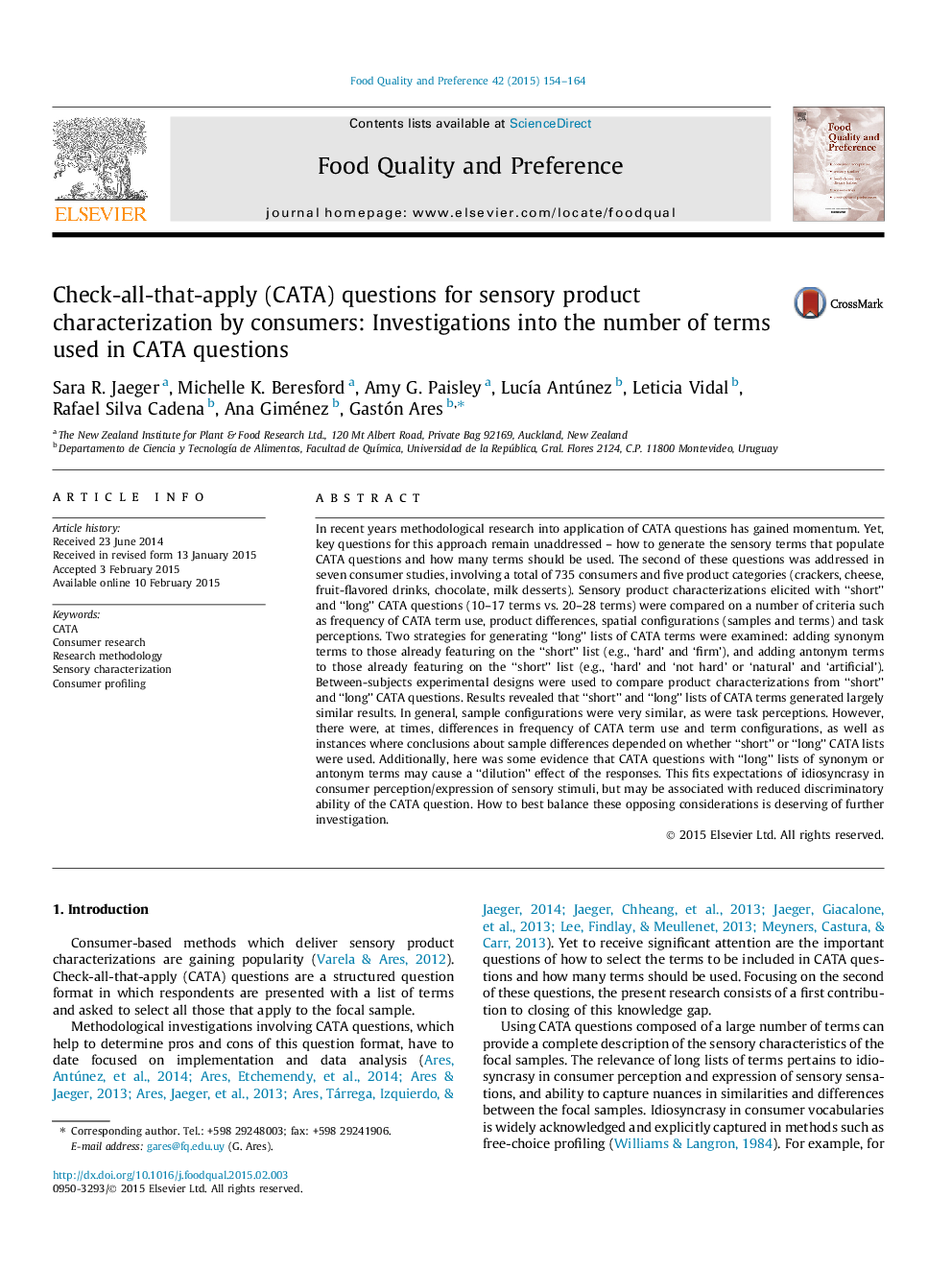| کد مقاله | کد نشریه | سال انتشار | مقاله انگلیسی | نسخه تمام متن |
|---|---|---|---|---|
| 4316999 | 1613155 | 2015 | 11 صفحه PDF | دانلود رایگان |

• Results obtained using CATA questions with different number of terms were compared.
• Average frequency of term use was lower for “long” than “short” CATA questions.
• Sample discrimination was similar for “short” and “long” CATA questions.
• Sample and term configurations from “short” and “long” CATA questions did not differ largely.
• Task ease and tediousness were similar for “short” and “long” CATA questions.
In recent years methodological research into application of CATA questions has gained momentum. Yet, key questions for this approach remain unaddressed – how to generate the sensory terms that populate CATA questions and how many terms should be used. The second of these questions was addressed in seven consumer studies, involving a total of 735 consumers and five product categories (crackers, cheese, fruit-flavored drinks, chocolate, milk desserts). Sensory product characterizations elicited with “short” and “long” CATA questions (10–17 terms vs. 20–28 terms) were compared on a number of criteria such as frequency of CATA term use, product differences, spatial configurations (samples and terms) and task perceptions. Two strategies for generating “long” lists of CATA terms were examined: adding synonym terms to those already featuring on the “short” list (e.g., ‘hard’ and ‘firm’), and adding antonym terms to those already featuring on the “short” list (e.g., ‘hard’ and ‘not hard’ or ‘natural’ and ‘artificial’). Between-subjects experimental designs were used to compare product characterizations from “short” and “long” CATA questions. Results revealed that “short” and “long” lists of CATA terms generated largely similar results. In general, sample configurations were very similar, as were task perceptions. However, there were, at times, differences in frequency of CATA term use and term configurations, as well as instances where conclusions about sample differences depended on whether “short” or “long” CATA lists were used. Additionally, here was some evidence that CATA questions with “long” lists of synonym or antonym terms may cause a “dilution” effect of the responses. This fits expectations of idiosyncrasy in consumer perception/expression of sensory stimuli, but may be associated with reduced discriminatory ability of the CATA question. How to best balance these opposing considerations is deserving of further investigation.
Journal: Food Quality and Preference - Volume 42, June 2015, Pages 154–164